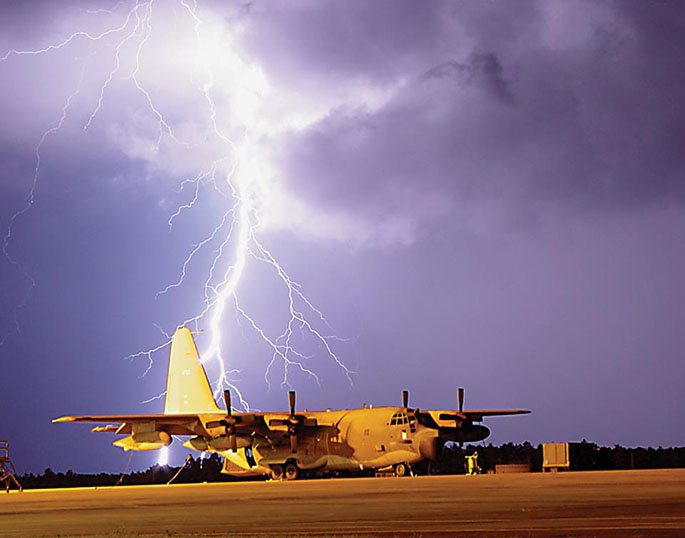When “lightning within five” is announced on an U.S. airbase, personnel are instructed to seek immediate shelter. Lightnings don’t down planes, at least not directly…
Taken in 2006 at Duke Field, the above image shows a lightning strike near an MC-130E Combat Talon aircraft.
Close encounters between planes and lightning occur every now and then around the globe.
In the 1980s, some F-16 Fighting Falcon jets were lost after being hit by a lightining strike. In one case, the lightning ignited the vapors in the empty centerline tank, which exploded causing extended damage to the aircraft’s hydraulic system.
Since lightning strikes are quite rare (1 event each year on average) these are seldom a real risk to military or civil aviation.
Furthermore, planes are shielded by a so-called Faraday Cage externally made by a conducting material, that blocks out external static electrical fields: charges redistribute on the conduting material and don’t affect the cage’s interior.
Wide bodies are huge flying Faraday Cages: if hit by a lightning they let the current pass through the fuselage until ground, preserving the systems’ integrity.
All commercial and mil planes have to meet several safety lightining-related requirements to get the airwothiness certifications required in the U.S. or Europe.
For instance, they must be able to withstand a lightning strike without suffering significant airframe damage, without any possibility of accidental fuel ignition in the tanks and preserving the avionics and systems failures induced by the electromagnetic field created by the electrical charges of the lightning.
On the Internet, you can find some videos showing civilian planes hit by lightning strikes and continue flying as nothing has happened.
Image credit: U.S. Air Force
Related articles

















